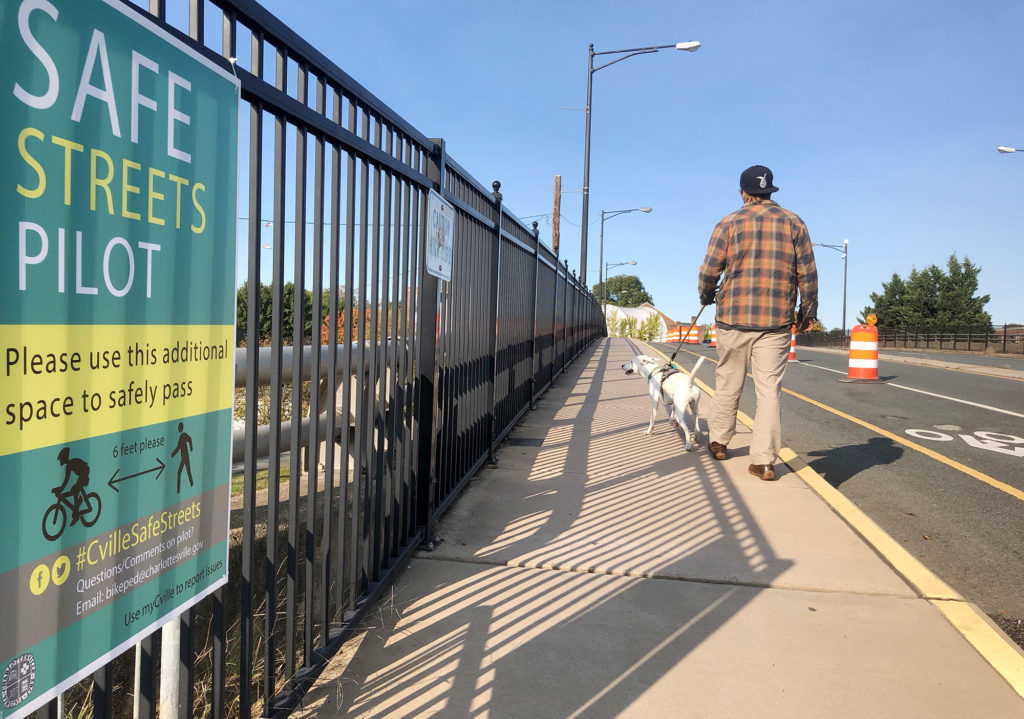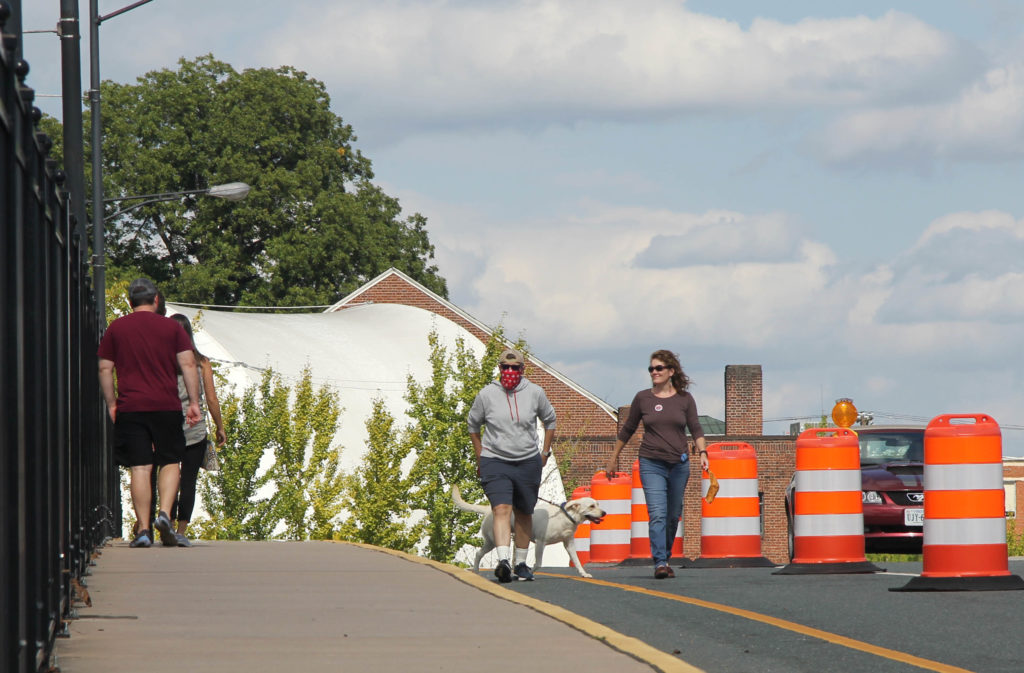
COVID-19 has brought dramatic changes to the way we live, including how we gather to call for change.
When the pandemic struck in March 2020, PEC had to cancel our popular slate of social bike rides and could no longer convene our monthly advocacy meetups in person. Undaunted, we shifted the discussions from cafes and conference rooms to virtual platforms that have proven to be welcome ways to stay connected. But we weren’t sure if our approach to collective impact would translate to the virtual world.
We recently received an answer.
Our first PEC-led collaborative project in the new, Covid-19 era was a springtime proposal to the governments of Charlottesville and Albemarle, asking them to close underutilized road space to make room for safer and more socially-distant walking and biking. A group of advocates collectively researched all the issues, including what is safe, what’s healthy, what other places are trying and what would assure the most equitable benefit.
It turns out that Charlottesville City transportation officials were also thinking about a very similar idea and even had some suggested routes in mind. We invited them to one of our meetings and compared notes. The result was a well-crafted memo to city (and county) leadership that took into account what the City staff had deemed feasible.
[Read our Cover Letter | Read our Full Proposal]
That was in May.
After not hearing anything for a while, we were starting to think the idea was dead; a worthwhile exercise, but one that ultimately wouldn’t bear fruit. At the end of September, we were excited to see a press release from the City of Charlottesville announcing that the Safe Streets project would begin immediately with a trial at the first site on both of our proposals: the Belmont Bridge.

Why the Belmont Bridge?
The Belmont Bridge was selected for the first trial because it meets all of the criteria listed in our memo, including:
- Insufficient Sidewalk Space. This downtown connector sees a lot of pedestrian traffic, and the sidewalk on the east side of the street is fenced off for construction.
- Multiple, diverse neighborhoods and essential services nearby. This quarter mile of roadway connects multiple neighborhoods and is one of few ways to get across the railroad that separates the north and south halves of the city.
- Excessive Vehicle Speeds. Even though this street is in the middle of town, vehicles travel at unusually high speeds along this stretch because the road is divided like a highway and there are no buildings, driveways or other articulations along the way to force a driver to be cautious.
- Abundant Community Engagement. The Belmont Bridge is slated for replacement beginning next year and will eventually include wide sidewalks and protected bike lanes. Discussions about that roadway have been going on for more than a decade.
- Minimal Disruption. The future bridge will only have one vehicle lane in each direction, so we know that the borrowed portion of roadway is truly not necessary.
- It is Familiar to City Residents and Staff. The City’s Bike/Pedestrian Advisory Committee did a similar pilot program last year that was well-received in the community, and the Public Works Department was able to execute it without difficulty.
If the project proves successful, it will be extended and replicated in other parts of the city.
This accomplishment, although small in scope stands as an example of what is possible when walkers, bikers, runners, and all kinds of people come together to identify a problem and articulate a solution in collaboration with local officials. We hope that it will lead to larger, more durable improvements. It also shows that change, while not always immediate, can come unexpectedly if we keep working at it.
